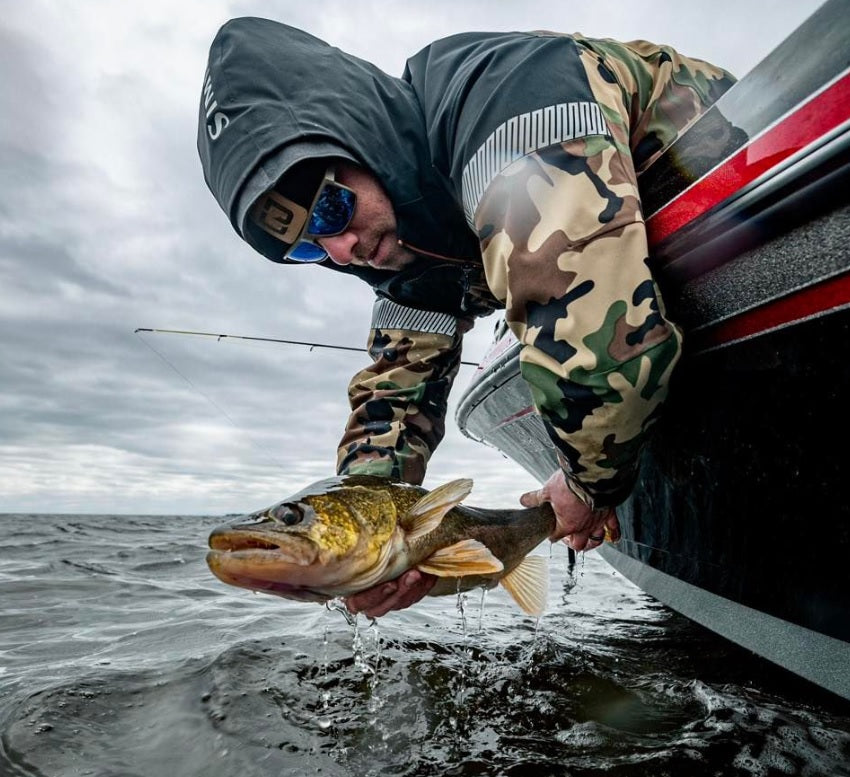Walleye Fishing Basics

Some of the team over here at FishVault grew up in the North and still consider walleyes the king of fish. Strong fighters on light tackle, great table fare, and something of a prized possession in most places they inhabit. Walleye fishing can be tough. They’re quite a temperamental and finicky fish to target, so starting out fishing for walleye is a challenge. There are many walleye fishing techniques, tricks, and baits that can be tough to wrap your head around, and even the best of us have tough days. This article was written to help you simplify how to catch a walleye as you get started.
Live bait rigging
A walleye fishing technique as old as time and as simple as it gets, live bait rigging. Tie on a swivel and run a snell of either monofilament or fluorocarbon (We personally prefer fluorocarbon as it's invisible underwater and has superior abrasion resistance) in a 6lb test. We like to run anywhere from a 3-8 foot snell depending on how many snags there are and water clarity, the clearer the water the longer the snell. An octopus hook is our go-to for live bait, and hook size will vary based on type and size of bait. A good rule of thumb is to go with a size 8 for leeches, size 6 for worms, and anywhere from a size 4 - 1/0 for minnows. For minnows and leeches, we like to go in the mouth and out the nostril. This keeps the bait alive the longest, which is very important when fishing for walleye. Troll this at .5 mph over humps, points, rockpiles or wherever you might find walleyes lurking in your home body of water. Leave the bail open but keep your finger on the line. When you feel a bite, drop the line and allow the fish to take the bait. The sliding sinker allows the walleye to swim with the bait without feeling any resistance. Typically give it 5 seconds then slowly reel up until the rod loads up and do a sweeping hookset. Play around with the amount of time you let the fish eat the bait, it varies by day. Sometimes 10-15 seconds can be necessary on a tougher bite type of day.
Slip Bobbers
You’re probably thinking, seriously, a bobber? Hear us out. A walleye’s eyes are placed so that the fish sees significantly better above it, so a slip bobber suspending a bait is often the ticket. A slip bobber can be one of the most effective techniques available. We often times will run these in tournaments, THEY ARE EFFECTIVE! The great thing with slip bobbers is you can use mostly the same gear as you would with live bait rigging, as you’re still technically live bait rigging. The only thing that changes is line. We often times run a monofilament line for this, as you don’t need the same level of sensitivity that you do with other techniques. Go to your favorite hump, piece of structure, or find a group of fish on a basin and throw it over! Set the bobber stop at a depth where your bait is about 2ft off the bottom and patiently wait for a bite. This walleye fishing technique catches even the most finicky of fish. There aren’t many walleyes that can resist a nice big leech hanging above their heads.
Jigs
A jig may be one of, if not the best, presentations for fishing for walleye. Jigs are extremely versatile and able to be used with just about any walleye fishing technique. A medium-light action spinning rod works great with a jig. You can fish a jig in just about any depth. When fishing shallow, 1/8oz and 1/4oz options are ideal, but deeper water can call for as much as 1oz. When the jig hits the bottom, give the rod slight pops to lift the bait from the bottom and let it fall again on a tight line. Play around with cadence, as sometimes just a slow steady drag is superior.
Next time you’re out on the water chasing after those marble eyes give these techniques a try and you will put a lot of fish in the boat! Make sure you take your FishVault monthly fishing subscription box with you to have access to extra fishing gear and tackle to make your time on the water even more enjoyable.



